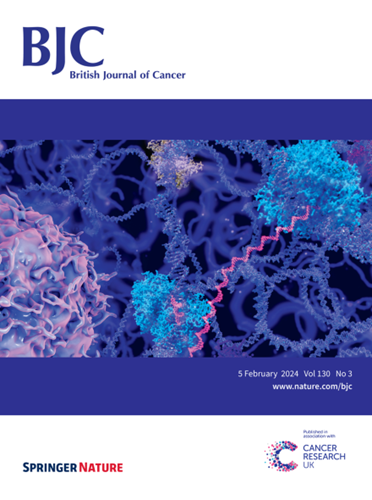Temporal dynamics of immune cell patterns in bladder cancer patients receiving Bacillus Calmette-Guérin therapy
IF 6.4
1区 医学
Q1 ONCOLOGY
引用次数: 0
Abstract
Bacillus Calmette-Guérin (BCG) is capable of enhancing the infiltration of immune cells into the tumour. However the temporal dynamics of immune cell patterns in patients receiving BCG instillation remains unclear. Ninety-six patients who underwent intravesical BCG therapy, comprising 46 responders and 50 non-responders, were retrospectively enroled to explore the evolving immune landscape. This study involved a detailed examination of sequential samples collected before, during, and after BCG treatment to assess BCG’s influence on the immune microenvironment, employing techniques such as immunohistochemistry, fluorescent multiplex immunohistochemistry, and mass spectrometry techniques. Our study found that initial BCG instillation leads to enhanced immune cell infiltration, correlating with treatment efficacy, with responders exhibiting more pronounced increases. Non-responders experience a rise in immune cell infiltration and PD-L1 expression during the first instillation, which returns to baseline after treatment. In non-responders, BCG re-challenge fail to further increase immune cell infiltration into the tumour or improve patient outcomes. Strikingly, proteomics data revealed that GBP1 expression was induced by BCG treatment in non-responders. Our findings demonstrated the induction of tumour PD-L1 expression by BCG in non-responders, and therefore provide insights for the combination of BCG and anti-PD1/anti-PD-L1 therapy.

接受卡介苗杆菌治疗的膀胱癌患者免疫细胞模式的时间动态。
背景:卡介苗(Bacillus Calmette-Guérin,BCG)能够增强免疫细胞对肿瘤的浸润。然而,接受卡介苗灌注的患者体内免疫细胞模式的时间动态仍不清楚:对接受卡介苗鞘内注射治疗的 96 名患者(包括 46 名应答者和 50 名非应答者)进行了回顾性登记,以探索不断变化的免疫格局。这项研究采用免疫组化、荧光多重免疫组化和质谱分析等技术,对卡介苗治疗前、治疗中和治疗后采集的连续样本进行详细检查,以评估卡介苗对免疫微环境的影响:我们的研究发现,卡介苗的初次灌注会导致免疫细胞浸润增强,这与治疗效果相关,有反应者的免疫细胞浸润增强更为明显。非应答者的免疫细胞浸润和PD-L1表达在首次灌注时上升,治疗后恢复至基线。在无应答者中,卡介苗再挑战未能进一步增加肿瘤的免疫细胞浸润或改善患者预后。令人震惊的是,蛋白质组学数据显示,卡介苗治疗诱导了非应答者体内GBP1的表达:我们的研究结果表明,卡介苗可诱导非应答者的肿瘤PD-L1表达,从而为卡介苗和抗PD1/抗PD-L1疗法的联合应用提供了启示。
本文章由计算机程序翻译,如有差异,请以英文原文为准。
求助全文
约1分钟内获得全文
求助全文
来源期刊

British Journal of Cancer
医学-肿瘤学
CiteScore
15.10
自引率
1.10%
发文量
383
审稿时长
6 months
期刊介绍:
The British Journal of Cancer is one of the most-cited general cancer journals, publishing significant advances in translational and clinical cancer research.It also publishes high-quality reviews and thought-provoking comment on all aspects of cancer prevention,diagnosis and treatment.
 求助内容:
求助内容: 应助结果提醒方式:
应助结果提醒方式:


